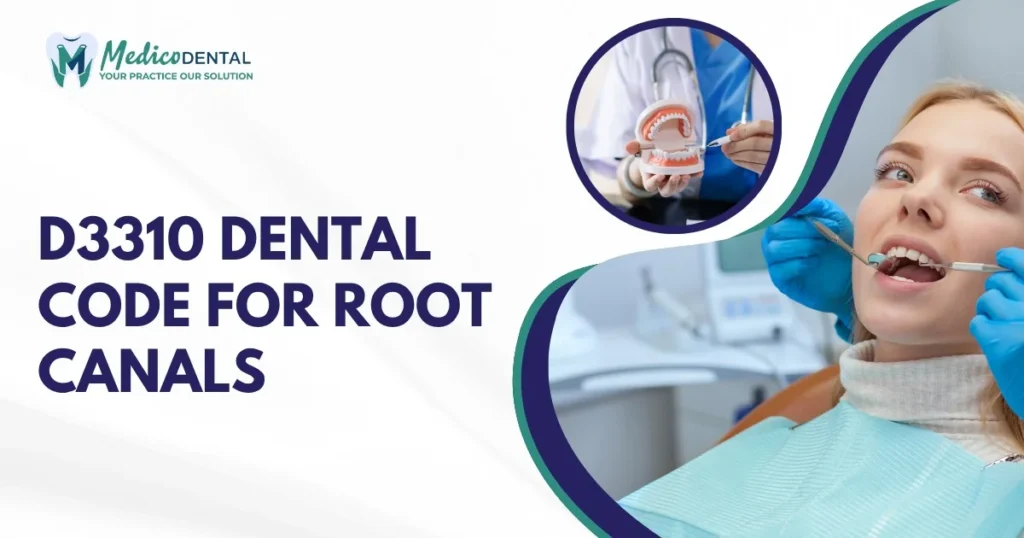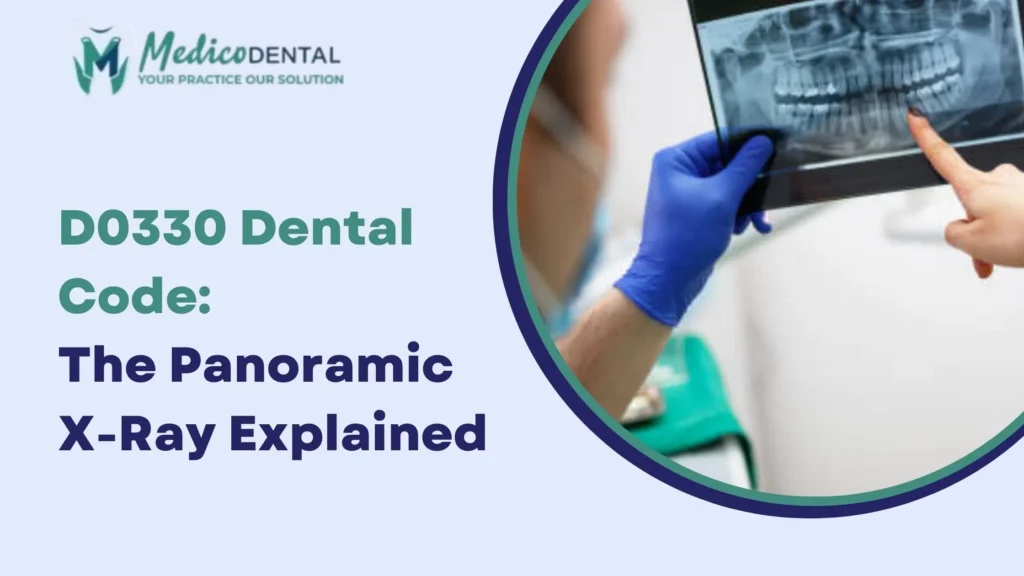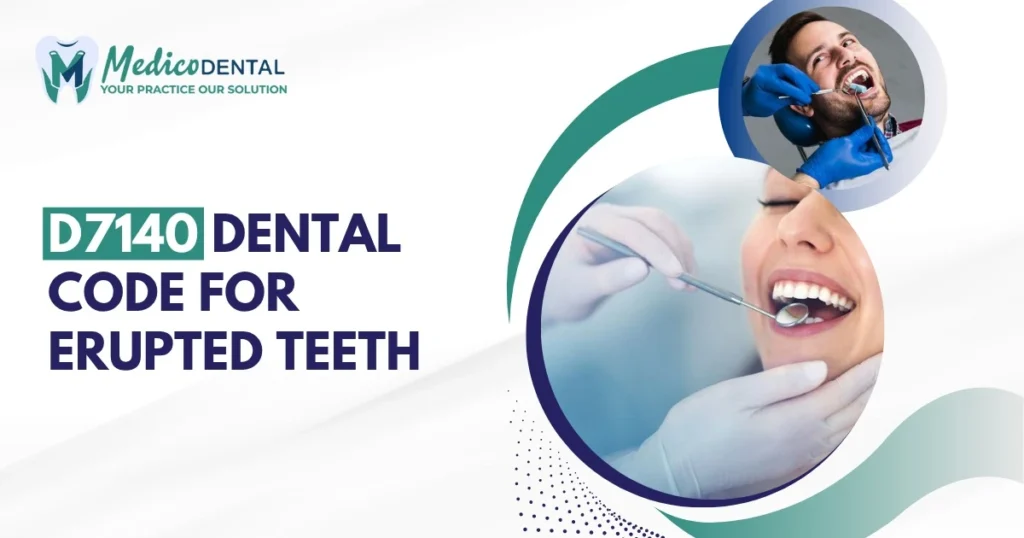The D3310 dental code is crucial for understanding endodontic therapy procedures, specifically for anterior teeth. This code helps dental professionals and insurance companies categorize and bill for treatments related to root canal therapy. For anyone seeking clarity on what the procedure involves, the D3310 code is the starting point for billing and treatment protocol.
What is the D3310 Dental Code?
Definition of D3310
The D3310 dental code refers to the procedure for endodontic therapy (root canal treatment) on an anterior tooth, excluding the final restoration (such as fillings or crowns). This code is specifically used for cases where the pulp of the tooth is infected or damaged and requires removal and cleaning.
Description of the Procedure Covered by the Code
The D3310 code covers the steps involved in treating an infected or damaged anterior tooth. It includes the removal of the pulp tissue, cleaning and shaping of the root canals, and filling the canals with a permanent material to prevent reinfection. The final restoration, such as a crown or filling, is not included under this code and is usually billed separately.
When is the D3310 Code Used?
Situations Where D3310 Applies
The D3310 code is used when endodontic therapy is performed on an anterior tooth. This includes teeth located at the front of the mouth, such as the incisors and canines. The procedure may be necessary when the tooth pulp is infected or has become necrotic due to injury or decay.
Exclusions from the Code
The D3310 code does not cover the final restoration of the tooth, which is often required after the root canal is performed. The restoration (e.g., filling or crown) is billed under a separate code, like D2330 for a filling or D2950 for a crown. It’s important to note that only the therapy aspect, not the restorative aspect, is included in D3310.
Step by Step Process Covered Under D3310
Removal of Infected Pulp Tissue
The first step in the process involves removing the infected or necrotic pulp tissue from inside the tooth. This is a crucial step as it prevents further infection and allows the root canal to be properly cleaned.
Cleaning and Shaping the Root Canals
After the pulp is removed, the next step is to clean and shape the root canals. This involves removing any remaining debris and bacteria to ensure the canal is free from infection. Shaping the canal ensures that it will be able to hold the permanent filling material.
Filling the Root Canals with Permanent Material
The final step in the procedure is filling the cleaned and shaped root canals with a biocompatible material, usually gutta percha. This prevents bacteria from re entering the canal and keeps the tooth protected.
D3310 and Insurance Coverage
How Insurance Handles D3310 Billing
Insurance coverage for the D3310 code varies depending on the plan. In most cases, dental insurance will cover the cost of the procedure, but it may require prior authorization, especially for more complex cases. It’s important to check with the insurance provider to confirm coverage before proceeding.
Prior Authorization Requirements for D3310
Some insurance plans may require prior authorization for the D3310 procedure. This means the dentist needs to submit a request to the insurance company for approval before performing the root canal therapy. It’s essential to ensure that this approval is obtained to avoid unexpected costs for the patient.
Variations in Coverage Based on Insurance Plans
Coverage for D3310 can differ depending on the patient’s dental plan. Some plans may have restrictions on how often the procedure can be performed, or they may only cover it for certain types of teeth (such as permanent teeth). It’s crucial for patients to review their insurance benefits and discuss any potential out of pocket expenses with their dentist beforehand.
This comprehensive understanding of the D3310 dental code ensures that both dental professionals and patients are well informed about the procedure and insurance coverage for endodontic therapy.
Commonly Used Codes Alongside D3310
Codes for Final Restoration (e.g., D2330, D2950)
After completing endodontic therapy with the D3310 code, additional procedures are often required to restore the tooth’s function and appearance. Two common codes used for final restoration include:
- D2330: This code is used for a composite filling on an anterior tooth. After the root canal treatment (D3310), this code would cover the procedure for placing a filling to restore the tooth’s structure.
- D2950: This code is used when a crown is placed on the treated tooth after the root canal. Crowns are often needed after a root canal, especially on anterior teeth, to ensure the tooth remains strong and functional.
How D3310 Integrates with Other Procedures
The D3310 code typically integrates with restorative procedures like D2330 or D2950. While D3310 covers the therapeutic part of the treatment (removal of infected pulp and root canal filling), D2330 and D2950 cover the restoration aspect. Together, these codes ensure comprehensive treatment, addressing both the underlying infection and the aesthetic restoration of the tooth.
Conclusion
The D3310 code is essential for documenting and billing root canal therapy performed on anterior teeth. It helps ensure that both dental professionals and patients understand the scope of the procedure, which involves removing infected pulp and filling the root canals. Proper use of this code facilitates smooth billing and reimbursement processes.
Understanding how the D3310 code integrates with insurance billing and restorative procedures ensures that patients receive comprehensive care while minimizing out of pocket costs. It’s important to be proactive in understanding your dental plan’s coverage and communicate effectively with your dental office to navigate any potential billing challenges.
FAQs
Is D3310 the same as a root canal on a molar?
Ans. No, D3310 is specifically for anterior teeth. Root canal procedures on molars would fall under different codes like D3320 or D3330, as molars typically have more complex anatomy.
Does D3310 cover both the root canal and the filling?
Ans. No, D3310 only covers the therapeutic aspect of the procedure, including the removal of the pulp, cleaning, and sealing of the root canals. Any fillings or crowns are billed separately, often under D2330 or D2950.
What should I do if my insurance denies coverage for D3310?
Ans. If your insurance denies coverage, review the claim for errors. You may need to provide additional documentation, such as x rays or a detailed diagnosis, to support the medical necessity of the procedure. Contacting your dental office for assistance in appealing the decision is also recommended.
Can I use D3310 if I’ve had a root canal on a different tooth before?
Ans. Yes, the D3310 code can be used for multiple teeth if necessary. However, the procedure will be billed separately for each tooth that requires endodontic therapy.



